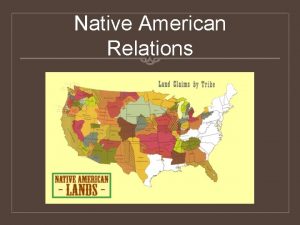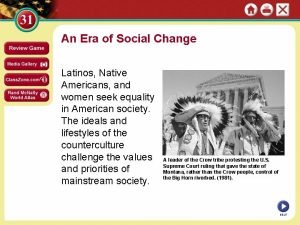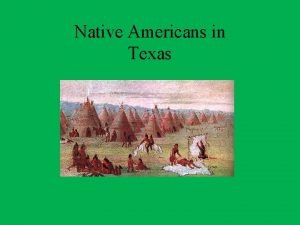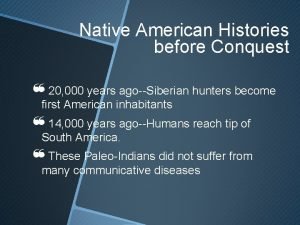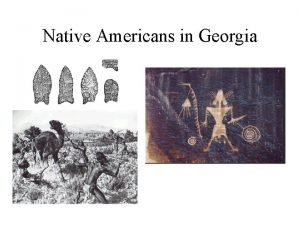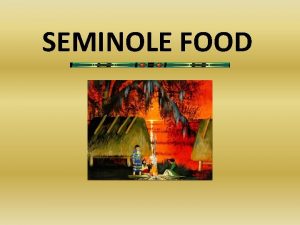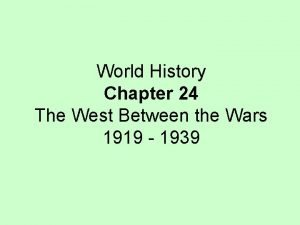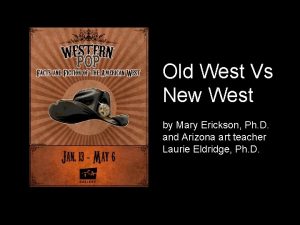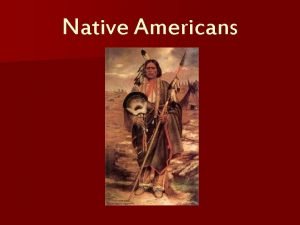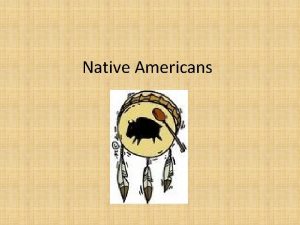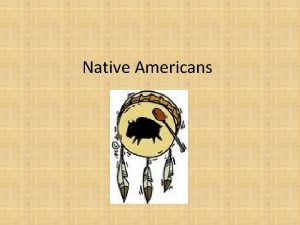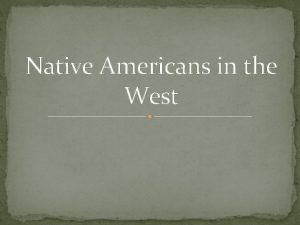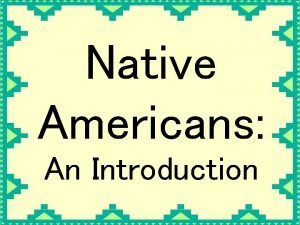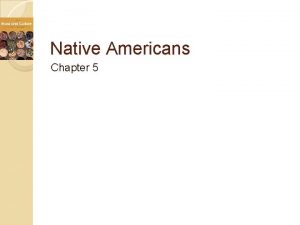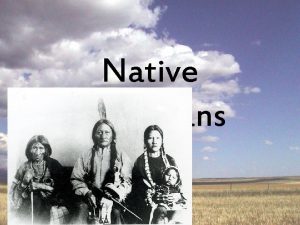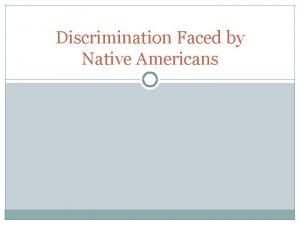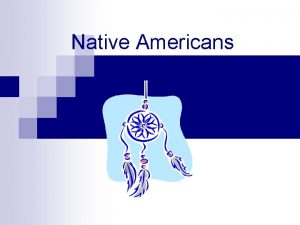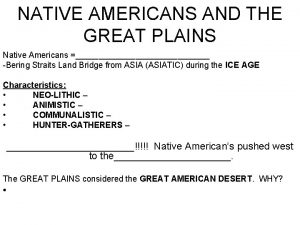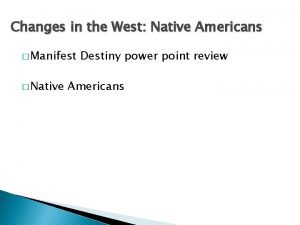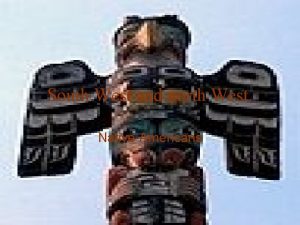Wars with Native Americans in the West Wars


















- Slides: 18

Wars with Native Americans in the West Wars and Leaders

Battle of Little Bighorn • 1868 - treaty was supposed to bring peace with Sioux • The government promised them that they could settle in the Black Hills in the Dakotas • White settlers heard of gold and came anyway • The Sioux protested - the U. S. Government tried to buy the Black Hills

Battle of Little Bighorn • Sioux leader & medicine man in Black hills = Sitting Bull • He refused to leave • June 1876 - Sioux and Cheyenne warriors gathered together along the Little Bighorn River in Montana • Crazy Horse = another Sioux chief - came with his forces

Battle of Little Bighorn • Lieutenant Colonel George Custer of the U. S. army faced thousands of warriors with only about 250 soldiers • Custer & almost ALL of his men were killed • News shocked the nation • The Army eventually crushed the Native American uprising & sent them to reservations • Sitting Bull & his followers escaped to Canada


With your partner, answer the following questions. . . 1) Do you agree with General Custer’s decision to fight in the Battle of Little Bighorn even though he was far outnumbered? 2) Explain the outcome of the Battle of Little Bighorn in your own words.

Long March of Nez Perce • Nez Perce = large & powerful Native American group in Pacific Northwest • Friendly with white settlers until 1860’s, when gold was discovered in their territory in Oregon • 1877 - the US government ordered the Nez Perce to leave and move to a reservation in Idaho

Long March Nez Perce • Leader of Nez Perce = Chief Joseph • Decided to leave & move to the reservation in Idaho BUT before he could go. . . a small group of Nez Perce attacked and killed several settlers Chief Joseph decided to retreat to Canada

Long March Nez Perce • 200 warriors & 600 women & children headed North • After traveling over 1, 000 miles, they stopped to rest Only 40 miles from Canadian border HUGE MISTAKE • US army surrounded them and initiated a 5 day siege (they couldn’t get food or water) • Chief Joseph surrendered • Army took them to Oklahoma “ I shall fight no more forever”


Answer the following questions with your partner. . . 1) Why did Chief Joseph decide that it would be best to flee their territory after members of his tribe attacked white settlers? 2) How would you feel if you got caught only a few miles from a destination you were fleeing to?

Wounded Knee 1889 - Western Native Americans began to perform a ceremony = Ghost Dance Celebrated the hoped for day when settlers would disappear, buffalo would return, and Native Americans could go back to their traditional ways of life

Wounded Knee U. S. government officials were alarmed & banned the dance • They thought Sitting Bull (Sioux Chief) was responsible for this movement - so they tried to arrest him - He was shot and killed

Wounded Knee • After the death of Sitting Bull - several Lakota Sioux gathered at Wounded Knee (a creek in South Dakota) o They were armed • December 1890 - U. S. army sent troops there to collect their weapons o One gun discharged - fired a shot o U. S troops opened fire o End = 200 Sioux & 25 U. S soldiers dead • End of armed conflict between U. S. government & Native Americans


Answer the following question with your partner. . . 1) Do you think that Wounded Knee could have been avoided? How?

The Apache Wars • 1870’s - U. S. Government forced Apache to move to a reservation in Arizona Their leader was Geronimo - he fled to Mexico 1880’s - Geronimo led raids in Arizona thousands of U. S. troops pursued him & his warriors 1886 - he gave up the fight

Buffalo Soldiers First peacetime, all African American regiment They were named by the Native Americans George Jordan - won the Medal of Honor for actions in the Indian Wars
 How many native americans died on the trail of tears
How many native americans died on the trail of tears Latinos and native americans seek equality
Latinos and native americans seek equality What three circumstances hurt native american
What three circumstances hurt native american Where did native americans come from
Where did native americans come from Portuguese sailor
Portuguese sailor Where did native americans come from
Where did native americans come from Traditional seminole indian food
Traditional seminole indian food Chapter 24 the west between the wars
Chapter 24 the west between the wars West north west wind direction
West north west wind direction Noord zuid west
Noord zuid west East is east and west is west
East is east and west is west East south east wind direction
East south east wind direction Old west vs new west
Old west vs new west Tia chieu sa te
Tia chieu sa te Các châu lục và đại dương trên thế giới
Các châu lục và đại dương trên thế giới Một số thể thơ truyền thống
Một số thể thơ truyền thống Thế nào là hệ số cao nhất
Thế nào là hệ số cao nhất Hệ hô hấp
Hệ hô hấp Tư thế ngồi viết
Tư thế ngồi viết
